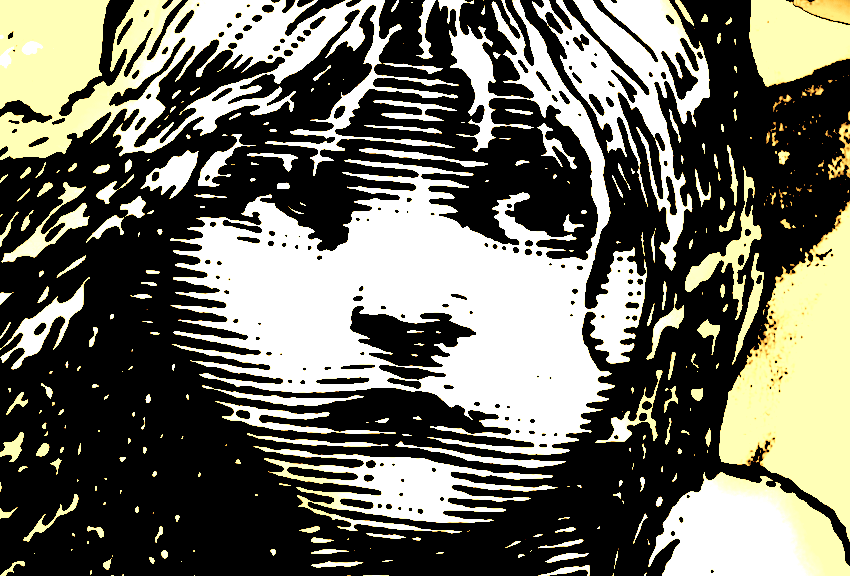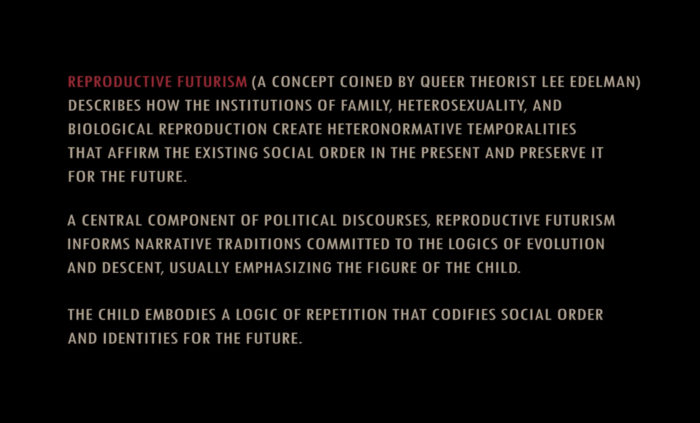Final Response - First Impressions

Dear Marie,
Two weeks ago, you gave birth at home to our second child. Please allow this laconic sentence to pay tribute to your achievement.
My task, intended to close, though hardly to complete, our project, was triggered when you went into labour. You asked me to create some sort of family album of film clips, sounds and photos of the days following the birth. In the event, I have started with footage from the day before, and also used sound recordings taken in the previous week, while I have decided not to use still photos (the basis of Response 4, which you refer to in the task). The film I have made is composed of eight vignettes (‘impressions’) and the aesthetic employed, partly a tribute to your work in Response 11 and Response 33, is intended as formal metaphor or correspondence for the restricted vision of the infant, for the new parent’s sense of disorientation and of being overwhelmed by sensation, and for the fragmentary sense of time imposed by irregular hours and fatigue.
In the task, you instruct me to make my response ‘a goodbye to the project but also an opening to something new’. A middle section of the film has a recording of a conversation by the nearby fjord where you and I talked about the success or failure of the project and discussed the question of ‘what next?’. I suggested that the success of the project could be measured by the birth of a child. I was joking—but I meant it. At least in the sense that this project has been the attempt by a pair of creative individuals to sustain a love relationship while respecting difference and interrogating inequality. Would we have had a second child without the project? I doubt it, and so the project’s ‘something new’ is the very material fact of a new human being.
Now, this is rather ‘a problematic statement’, as we say in trade. To explain why, I’d like to refer to two other films. You and I are currently attempting to watch—over consecutive nights in the minutes before we slump into a sleep we expect momentarily to be disturbed—2049, the Blade Runner sequel from a couple of years ago. Kathleen Loock (who I know and admire from the 2018 Middlebury workshop on videographic criticism) recently published a very fine videoessay and commentary that deals with the theme of ‘reproductive futurism’ in Blade runner 2049. Here’s a still from Kathleen’s videoessay in which she sets out the theme.
The concept of reproductive futurism Kathleen draws on is introduced in the first chapter (wryly entitled ‘The Future is Kid Stuff’) of Lee Edelman’s polemical book No Future (2004). In it, Edelman performs a provocative and entertaining critique of the ‘figure’ (in the sense of symbol and trope) of the child, posited as ‘the prop of the secular theology on which our social reality rests’ (12). He writes: ‘the social order exists to preserve for this universalised subject, this fantastic Child, a notional freedom more highly valued that the actuality of freedom itself, which might, after all, put at risk the Child to whom such a freedom falls due’ (11). (He has in mind here that sort of right-wing or religious discourse that sees homosexual desire as a threat to reproduction, hence (supposedly) the existence as such of children. Edelman’s own provocative claim is that the political right and the religious conservatives are correct: that queerness does indeed radically threaten the survival of the social order and is to be treasured and lived as such. Hence the sloganistic and programmatic ‘No Future!’, pronounced in defiance of liberal attempts to normalise the queer through legalising gay marriage, etc. For Edelman, queerness is the imperative and potential to imagine forms of life and society utterly and, he would say, utterly unreasonably discontinuous with our own (‘reason’ being the preeminent liberal value).) Given the foundational role of the figure of the child in the ‘lethal’ (31) violence of a social order that forbids, excises or domesticates queer desire and forms of life, Edelman is moved to proclaim:
Fuck the social order and the Child in whose name we’re collectively terrorised; fuck Annie; fuck the waif from Les Mis; fuck the poor innocent kid on the Net; fuck Laws both with capital ls and with small [i.e., Bernard Laws, a homophobic Catholic cardinal as well as the ‘Law’ as such and all the lower-case laws that express and perform the social order]; fuck the whole network of Symbolic relations and the future that serves as its prop. (29)
And, to extend his litany, fuck this project! At least to the extent that I have located, in the film above, the value of the project in the production of a child and ‘therefore’ in the reproduction of a brutally exclusive social order. For me to posit a child (or the Child) as the retrospective rationale for an undertaking that, at the outset, I had aspirationally conceived of in queer terms (among other things, as a frustration of disciplinary boundaries and orders of competence; as a rejection of a fixed identity for each creative partner; as an evasion of a utilitarianism now compulsory in the academy), is to inhabit, on behalf of our project, a reactionary posture of the most fundamental sort. As Edelman says: ‘the fantasy subtending the image of the Child invariably shapes the logic within which the political itself must be thought.’ This is the logic of reproductive futurism, the terms of which ‘impose an ideological limit on political discourse as such, preserving in the process the absolute privilege of heteronormativity by rendering unthinkable, by casting outside the political domain, the possibility of a queer resistance to this organising principle of communal relations’ (2).
The italics in the last quote are mine, intended to pick out a theme that has recurred in our reflections on our project, that of privilege. ‘I’m anxious our project might be aestheticizing complacency,’ I wrote in passage 25 of Response 28. We have talked considered the project in relation to white privilege. Edelman’s work forces us to confront again the privilege (meaning, among other more heinous things, an implicit assumption of centrality, of significance, of relevance to others; an expectation we will be heard and attended to) of our undertaking in this project: the privilege of the white couple in a straight nuclear relationship, the reproductive success of which is the measure of the success of the project-undertaking itself.
But is there a way, as we close the project, to think it otherwise then as yet another assertion of the absolute privilege of heteronormativity? Maybe we can find a ‘yes’ to the question in the concern with temporality that has been a constant in the project. Let me return to Kathleen Loock’s essay to explain what I mean.
The key insight of Kathleen’s videoessay on Blade Runner 2049 is that (as she puts it in her commentary to the videoessay), the film’s ‘turn to generationality and biological reproduction’ […] ‘is intricately linked to the sequel form’:
The sequel is bound to a linear understanding of time and it is this formal characteristic of linear time that introduces a generational element—and indeed: a possible future—into the Blade Runner story. As Tom Boellstorff has pointed out, linear time is also ‘straight time’, bringing with it an ideology that scripts the heteronormative timelines of modernity from childhood to adult life, marriage, procreation, and inheritance. It produces what Elizabeth Freeman has called ‘chrononormativity’, an expected temporal order that is defined by a reproductive, generational, and unerringly future-oriented relation to time.
Kathleen says that 2049 establishes straight time by shutting down the multiple interpretations possible of the original Blade Runner, and most especially the original’s clear assertion there could be ‘no future’ for its protagonists. What about our project? Will we retrospectively establish the project’s ‘straight’ time at and from some point in the future? That is—will our project have a sequel?
We may doubt it. It’s notable that we have not achieved any rapprochement in our individual poetics, and that, as you put it, we’re still having the same discussions and the same arguments after a full year of working on the project. The iterative form of the project, which meant a weekly immersion in a present that often performed a temporal drag incompatible with chrononormativities (as in Response 9), has not represented or generated progress: it has reached no final artistic-academic goal; it has not brought us ‘closer’ as scholar-artists. Instead, it has foregrounded and cemented an incommensurability in our creative personalities. In other words, our project has been a failure.
What a relief!
It would be to flatter us to describe our project as an example of what Judith/Jack Halberstam has called (in a book from 2011) ‘the queer art of failure’, but perhaps our particular failure can be seen as having opened to some ‘more creative, cooperative, and surprising way of being in the world, even as it forced us to face some of the dark sides of life, love, and libido’ (I’m adapting the blurb of Halberstam’s book here). We haven’t been able to give coherence to the multiple possibilities introduced in the fifty tasks and responses; we haven’t been able to figure out how to work together; we haven’t been able to reconcile our differences; we fundamentally disagree. We can’t go on; but we’ll go on, persisting as and despite our failure together. In that sense, and with all due respect to Lee Edelman, our new child is the queer and glorious index of failure.

